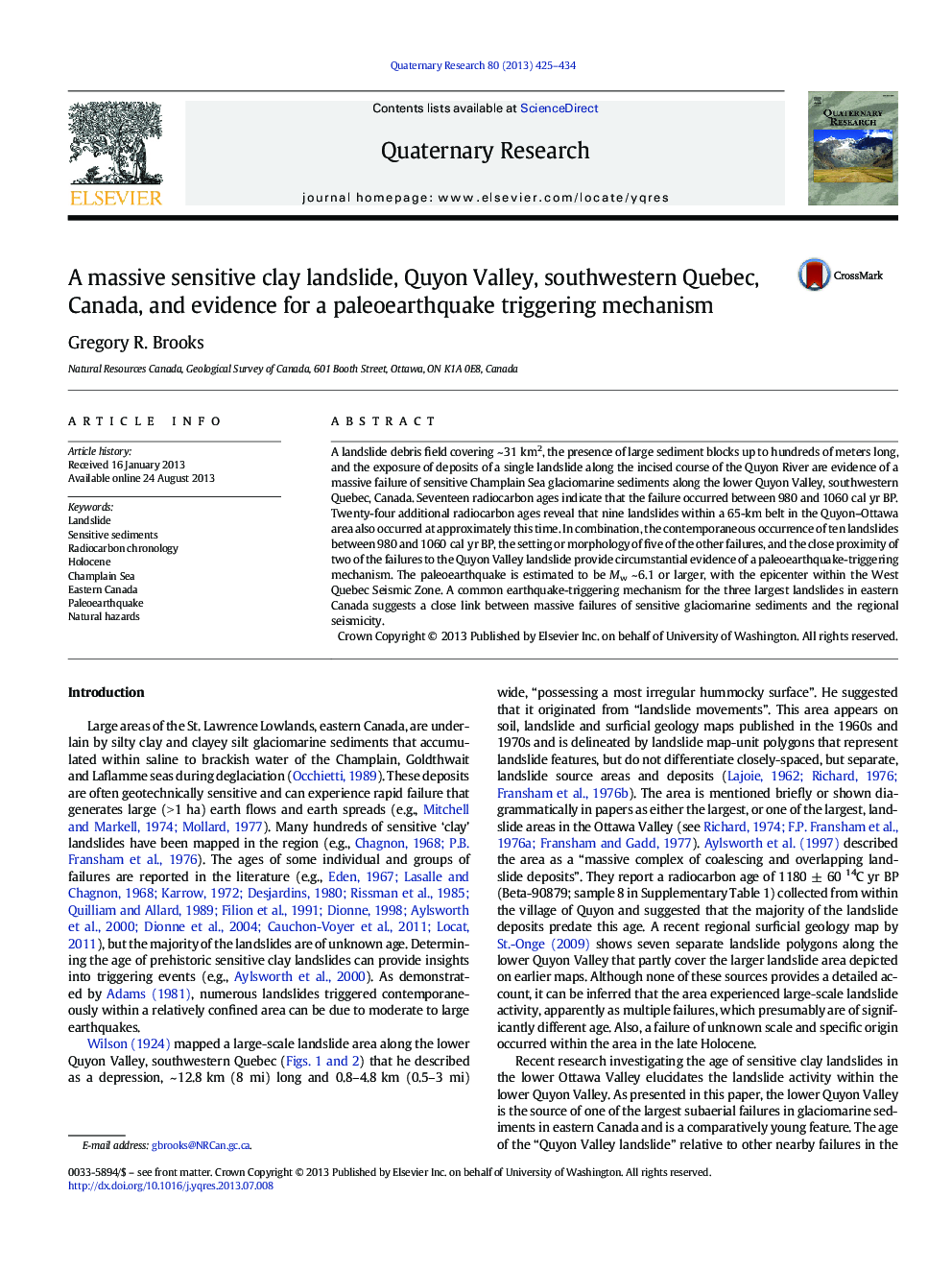| Article ID | Journal | Published Year | Pages | File Type |
|---|---|---|---|---|
| 1045289 | Quaternary Research | 2013 | 10 Pages |
A landslide debris field covering ~ 31 km2, the presence of large sediment blocks up to hundreds of meters long, and the exposure of deposits of a single landslide along the incised course of the Quyon River are evidence of a massive failure of sensitive Champlain Sea glaciomarine sediments along the lower Quyon Valley, southwestern Quebec, Canada. Seventeen radiocarbon ages indicate that the failure occurred between 980 and 1060 cal yr BP. Twenty-four additional radiocarbon ages reveal that nine landslides within a 65-km belt in the Quyon–Ottawa area also occurred at approximately this time. In combination, the contemporaneous occurrence of ten landslides between 980 and 1060 cal yr BP, the setting or morphology of five of the other failures, and the close proximity of two of the failures to the Quyon Valley landslide provide circumstantial evidence of a paleoearthquake-triggering mechanism. The paleoearthquake is estimated to be Mw ~ 6.1 or larger, with the epicenter within the West Quebec Seismic Zone. A common earthquake-triggering mechanism for the three largest landslides in eastern Canada suggests a close link between massive failures of sensitive glaciomarine sediments and the regional seismicity.
